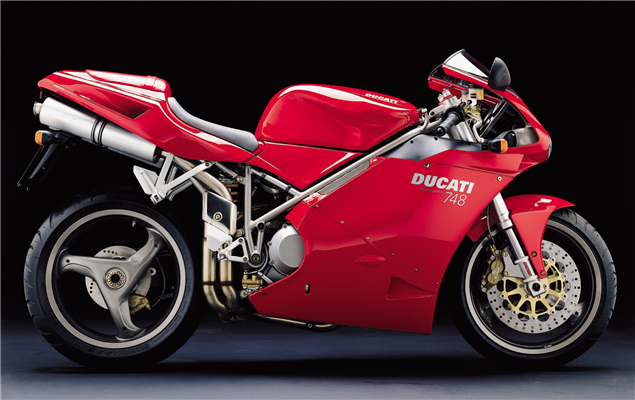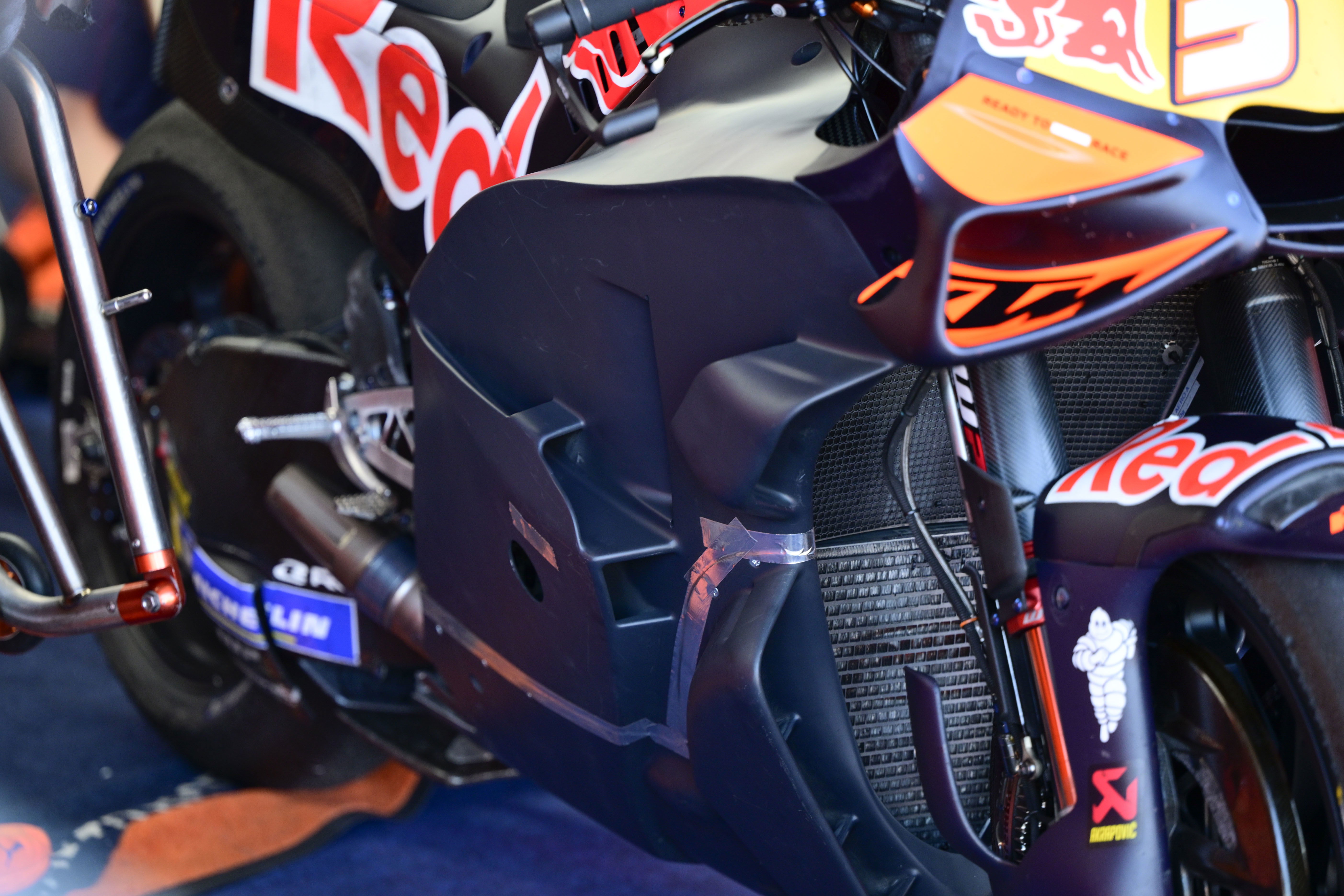Five great £3000 track weapons
Want a road bike that'll also cut in on the track? You don't need to blow the bank, check out these smart buys instead


2000 Honda SP-1
Honda’s SP-1 is often viewed as a failure, but while it flopped in the showrooms mainly due to its astronomical price, let’s not forget the SP-1 defeated Ducati’s all conquering 998 on the World Superbike scene in 2000.
True it took the whole of HRC’s might, not to mention Colin Edwards’ immense skill, to achieve its goal but it still has a world championship to its name – which is one more than the Yamaha YZF-R7.
For £3,000 you will get a well used (around 25,000 miles) SP-1 in a private sale. So should you bother? Hell yes, aside from a petrol tank the size of a peanut and fuel injection that kicks like a mule at low revs, the SP-1 is a stunning bike. The V-twin engine is basically a Japanese copy of a Ducati (it has virtually the same 100x63.6mm bore/stroke, however the 998 has 0.1mm shorter stroke).
The SP1 is 100% reliable and needs virtually no maintenance while still pumping out 136bhp. A Power Commander soon sorts the fuelling and you are left with a track bike that is less lazy to turn than a 998 and doesn’t have bloody cam belts! A homologation special for £3k? Bring it on!
Specs:
Engine: 999cc, V-twin, l/c, DOHC
Power: 136bhp
Weight: 200kg

2005 Suzuki GSX-R750 K5
Why do Suzuki continue to make the GSX-R750? Because it’s brilliant – simple.
The 750 offers the perfect blend of a supersport 600’s chassis with the useable section of power from a 1000cc motor. With a £3,000 budget you are looking at the K5, which is the last one before Suzuki went all stubby with the exhaust pipe and a model many consider the best version of the iconic brand.
As a track bike you may think that ‘only’ 126bhp is a bit wimpy – it isn’t. The great thing about the GSX-R750 is that you can go completely stark raving bonkers around the corners and not worry too much about it all ending in a gigantic highside should you be a bit over keen with your right wrist.
The power delivery on the GSX-R750 K5 is fabulous, superb fuel injection unleashes a decent spread of bottom end and mid-range with a screaming (and typical) GSX-R top end rush.
It’s not as fast as a 1000, but there again it isn’t anywhere near as intimidating to ride on track or the road – something that will ultimately make you a faster rider. The only downside is it lacks a bit of the pose factor you get with Italian bikes.
Specs:
Engine: 749cc, inline four, l/c, DOHC
Power: 126bhp
Weight: 163kg

Aprilia RSV1000 Mille
With a £3,000 budget you are probably looking at a first generation RSV, which means a single pipe and not the twin pipe of the updated model, although you may pick up a tatty later generation 2004 model in a private sale.
As a trackday bike the RSV is an absolute cracker and there is a whole mountain of information out there on how to make them fly thanks to various one-make RSV race series, which is another avenue to explore.
Look on eBay and you can pick up an ex-race RSV for under £3,000. Ex-race bikes are always a potential minefield, however you always get far more for your money if you are prepared to take the chance. The suspension will be sorted (the Öhlins forks blow seals like an Essex girl blows…), the rear ride height will be raised, the airbox expanded to help the bike breath (gaining 5bhp) and it will have race cans fitted – although they will probably be dented to hell.
If your sole intention is to cane the bike on track, provided the pipes pass the various track noise limits (baffles can help here) then why not get an ex-racer? You can ‘daylight only’ MOT a track bike (provided it isn’t stolen, get the logbook!!!) and they look as cool as hell at your local bike meet – although you will get pulled by the cops every time you ride it…
Specs:
Engine: 997cc, V-twin, l/c, DOHC
Power: 138bhp
Weight: 185kg

2002 Ducati 748
The limited budget means that you are looking at a ‘stock’ 748 and so none of the flash Öhlins that you get on the ‘S’, but that isn’t necessarily a bad thing.
Often overlooked in favour of its bigger brother, the 748 is a hidden gem of the bike world. While the chassis, styling and brakes are identical to the 998, the 748 gets a smaller capacity Desmo motor that loves to be revved.
The words ‘revs’ and ‘Ducati’ aren’t often used in the same sentence, but with the 748 it is a different story. You can thrash this mini-superbike and it responds with a fairly respectable 104bhp and 54ft.lb of torque, however it’s in the corners the 748 comes alive. Get over the initial laziness to turn in and once on its ear the 748 is fantastic, unbelievably balanced and one of those bikes you feel like you can just lean forever.
Sticky tyres, long sweeping corners and you are in paradise – although there is a storm on the horizon…servicing. Thrash merry hell out of a Duke and you will need to be anal about servicing it. Fully-synthetic oil changed twice a year and new cam belts every two years is the absolute minimum, also the 748 has some previous for cam finish issues… It’s an engaging bike to ride both on and off track, however it’s not Japanese and therefore will throw up some unexpected costs – as well as the occasional rod…
Specs
Engine: 748cc, Desmo V-twin, l/c, DOHC
Power: 104bhp
Weight: 196kg

2005 Triumph Daytona 650
In many ways the Daytona 650 is a throwback to the bad old days of Triumph – a time when the British company attempted to copy the Japanese by using an inline four motor rather than do their down thing with a triple. However this fact shouldn’t put you off what is a brilliant supersport bike.
The Daytona won a TT at the hands of Bruce Anstey and a British Supersport race with the late, great, Craig Jones – hell even Prince William rode a Daytona! The 650 version was only around for one year as a stop gap between the 675 and 600 and is essentially a 600 with a 3.2mm big bore (V&M team owner Jack Valentine swears blind this wasn’t used in the BSS bike).
The Daytona not only looks quirkily pleasing, it’s physically big which makes it comfortable on the road and the chassis is excellent. Triumph know how to make a good handling bike and the 650 is no exception.
The suspension is a touch soggy when pushed hard on track (it’s brilliant on the road) but that’s easily sorted and once you fit rearsets to help the gear change (the Triumph OE linkages make changing a hit and miss affair) you are left with a superb machine with more grunt than the Japanese 600s of the day.
Specs
Engine: 646cc, inline four, l/c, DOHC
Power: 112bhp
Weight: 165kg

2002 Buell XB9R Firebolt
Yes, the clever ones among us will notice this is a sixth bike in a list of five. We wanted to throw a leftfield option in there. Yes, it’s a converted Harley engine, but stick with us here as the Firebolt is a superb track bike. Let’s get the problems out of the way first – the gearbox is average, it’s not that fast and the drive belt does sometimes snap.
Ok, that accepted let’s move onto the plus sides. The chassis is absolutely brilliant. Erik Buell, who designed the bike, knows his stuff when it comes to a chassis and the Firebolt has a ridiculously steep head angle, something that gives it incredibly agile handling.
Erik used to race 250s and in this bike he has basically made a 250 race rep with a sodding great air-cooled lump. The clever touches such as the oil in the swingarm and fuel in the frame, not to mention the rim-mounted disc, are great pub talking points and a Buell with a race can sounds like a squadron of Lancaster bombers coming into land.
It’s quirky, surprisingly good fun to ride and a very good handling bike with a degree of rarity about it. Ultimately your mates will be faster on their ‘proper’ sportsbikes, but the Buell goes around corners like stink. And that'll surprise more than a few people...
Specs
Engine: 983cc, V-twin, a/c, OHC
Power: 92bhp
Weight: 174kg











